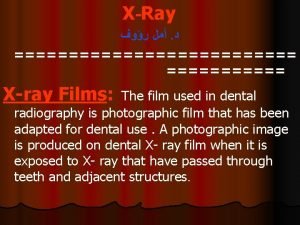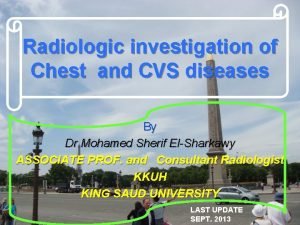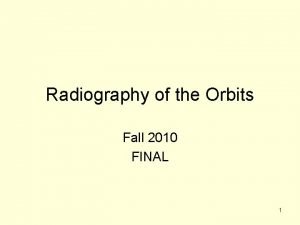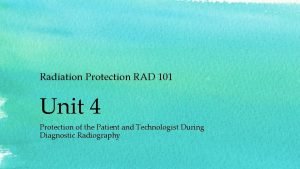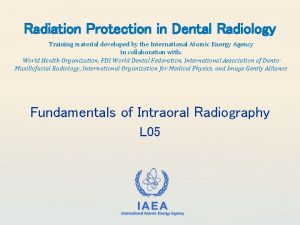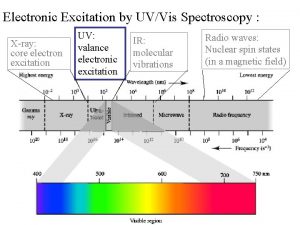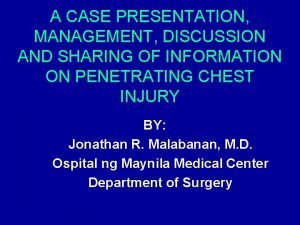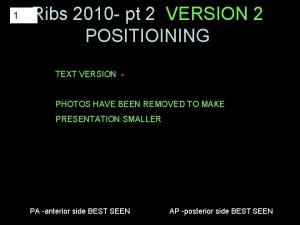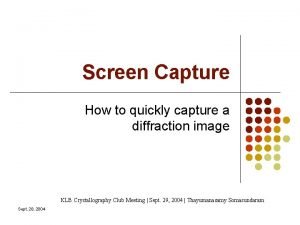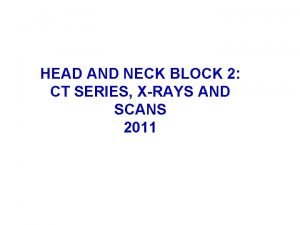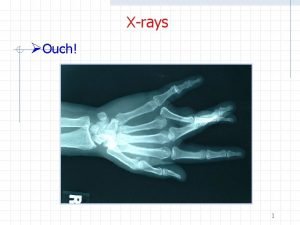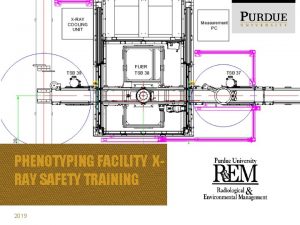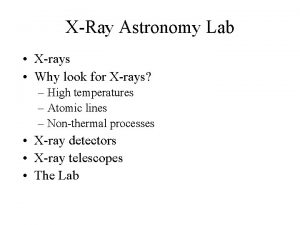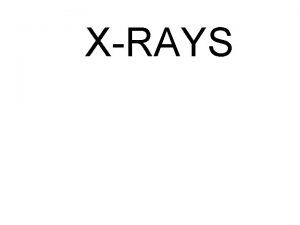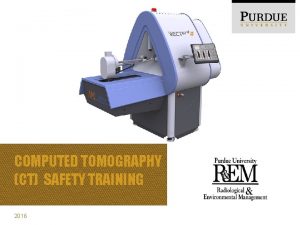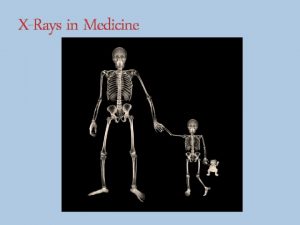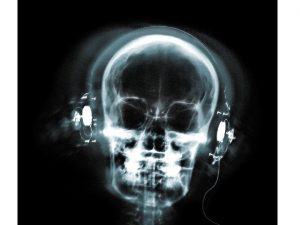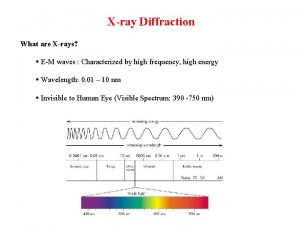Chapter 13 Xray Protection Xray Protection l Xrays
































- Slides: 32

Chapter 13 X-ray Protection

X-ray Protection l X-rays (in a single large dose or repeated small doses) have been responsible for causing: • Dermatitis • Inhibition of hematopoetic cells • Endothelial Changes • Neoplastic changes • Skin Cancer • Inhibition of glandular activity • Destruction of blood • Deformation of a growing fetus cells • Death

X-ray Protection We can therefore see that x-ray protection is a serious matter & we must consider radiation protection for : l The Patient l The Doctor l Staff l Those in the Vicinity l

X-ray Protection l This is extremely important when considering the cumulative effects of x-ray. l This includes accumulated small dosages of radiation.

The Roentgen (R) The unit that is used to measure the amount of radiation is the Roentgen Unit (amount of x-ray in air). l It is defined as the amount of radiation which produces in 0. 1296 grams of air (1 cc) at 00 Celsius & 760 mm of mercury one electrostatic unit of either change. l

The Roentgen (R) l The following chart appears in “Handbook 76 - Medical X-ray Protection up to three Million Volts” issued by the bureau of Standards, giving the exposure in roentgens for various exposures.

The Roentgen (R) Measured in air with total filtration equivalent to 2. 5 mm Al.

The Roentgen (R) 1 R = 1 RAD (radiation absorption dosage). – This is the amount of radiation absorbed by any object l 1 R = 1 REM (radiation equivalent manual dosage) – This measures the biological effects that radiation has on an organ. l

The Roentgen (R) l The exposure to the doctor in radiographing a patient can be measured directly by use of an r-meter mounted where he/she stands during the exposure, or by a dental film badge (used today), which is worn for a period & than developed & compared with a standard set of films.

The Roentgen (R) l Records of the amount of radiation received should be kept for the doctor as well as the patient. l A room meter will be used in addition to the r-meter. This is placed outside the x-ray room to secure that no radiation is escaping the boundaries of the room.

Maximum Safe Limits of Radiation l In discussing the maximum safe limits of radiation it may well be stated that any amount of radiation causes some damage & thus the maximum safe limits may be Zero.

Maximum Safe Limits of Radiation l l In considering safe limits it must be remembered that dosage may be divided into somatic & gonadal. The Somatic deals with possible damage to the individual. The gonadal deals with possible damage to future generations. The somatic can be further subdivided into a limit for exposure at one time ( as the patient receives) & a limit for continual daily dose ( as the doctor receives in his/her practice).

Today’s greatest Concerns over the effects of radiation are its life shortening effects and cancer induction.

ALARA l ALARA (as low as reasonably achievable) mandates, with economic and social factors being taken into account, that operational dose limits will be much more restrictive than the maximum permissible dose limit.

Exposure Incident to Some Common Diagnostic Procedures (all exposures made with 0. 5 mm Al as a filter)

Maximum Safe Limits of Radiation Tissues highly susceptible to radiation damage include: l Eye/Lens l Thyroid l Bone Marrow/Spleen* l Reproductive Organs* l Lymphocytes l * These cells undergo mitosis thus making them more susceptible to the damaging effects of radiation

Maximum Safe Limits of Radiation 1994 Nuclear Regulatory Commission Standards state that the maximum permissible dose is as follows: l 5 REM/year for entire body l 15 REM/year for the eye l 50 REM/year for an extremity l 1/2 REM/entire pregnancy (fetal dose) l

Results of Exposure Dr. Harvey Helton DC, in an article in the March 1962 issue of the Journal of the American Radiography Technologists, gives the following for varying amounts of exposure to the entire body: l 1. 0 to 25 r - No obvious damage (includes a single dose) l 25 to 50 r - Some slight drop in WBC l

Results of Exposure l l l >100 r & < 200 r - Nausea, vomiting, diarrhea. 200 to 1000 r - Nausea, vomiting, diarrhea, leukopenia, hemorrhage, anemia, infection & risk of death increases. 1000 r - Survival rate is 21 to 56 days. 1000 to 5000 r - Electrolyte balance is disrupted, fluid loss & shock, survival rate is 3 to 10 days. >5000 r - CNS effected, survival rate 1/2 to 3 days.

X-ray Protection in Practice As previously stated, we have an obligation to protect, ourselves & all others from unnecessary exposure while making spinal x -ray examinations. l Even though there is much overlapping we will try to treat these three areas separately & in the order given. l

Protection of the Patient l l The x-ray is one of the most scientific methods of analyzing the patient’s health problem, but we must make every attempt to protect them from as much unnecessary radiation as possible. The following procedures are essential in keeping the patients dosage & total exposure to a minimum: Secure a history of previous exposure from any sources & keep an accurate exposure record. l Keep the patient’s exposure well WNL. l

Protection of the Patient Use proper filtration (2 mm Al added, 3 mm added over 70 k. V, an additional thin layer of cooper over 100 k. V). l Use proper collimation. l Use fast films. l Use gonadal shields when possible. l Use a high k. V technique (this will decrease the l patient exposure. It will also decrease contrast which may produce a poor quality film).

ALARA l ALARA (as low as reasonably achievable) mandates, with economic and social factors being taken into account, that operational dose limits will be much more restrictive than the maximum permissible dose limit.

Protection of the Patient Use 50 MA or less when possible (I. C. A. recommendation). l Use 40 - 72 inch film-anode distance. l Use good darkroom procedures to prevent improper developing necessitating re-takes. l Avoid x-raying females during the 10 days before the menstrual period or during pregnancy (especially the first three months). l

Protection of the Doctor l l We should remember scattered (and secondary) radiation bouncing off the patient is a source of radiation for the doctor. Any factors that lowers the patient’s exposure therefore lowers the doctors. In addition: l Wear a radiation badge, have it properly checked & record the results. l

Protection of the Doctor Have the radiography room properly set up - don’t take shortcuts. l Use a gonadal shield l Have a lead lined booth (at least 1. 5 for a maximum off 100 k. V). l Have periodic blood examinations (radiation badge is sufficient). l Use a fixed position “dead man’s switch” with a reliable timer. l

Protection for Others in the Vicinity In using x-ray equipment we are also responsible for protecting the people living or working in the area around the x-ray room. l This is best accomplished by restricting radiation to the confines of the room or at least keeping the amount passing out within safe limits. l

Protection for Others in the Vicinity We can test for radiation leaks the room by placing loaded cassettes (a whole film is not necessary) on the other side of any wall suspected (especially the one that the primary beam strikes), on the floor of the office above & against the ceiling of the office below. l These films are developed at the & examined for any sign of exposure. l

Protection for Others in the Vicinity l If enough extra cassettes are not available one area must be checked each day. l If this investigation proves that there is radiation escaping from the room, the following test should be done.

Protection for Others in the Vicinity Check for primary radiation leaks in the tube head by cutting an 8 x 10 film into four parts, & making four exposures, one with the cassette on the anode end of the tube, one with the cassette on the cathode end, one with the cassette on the right & one on the left. l Develop & examine for signs of exposure. l

Protection for Others in the Vicinity l In all these tests, signs of exposure are more easily seen if lead letters are used on the cassette.

Tidbits Lightproofing: a baffle/maze - like entrance is more light proof than a door & provides better ventilation. l The dark room does not have to be black or dull. If the safe light is safe than the reflected light will be too because we can’t intensify light. l We should use light green when using a green safelight & beige for a red or yellow safelight. l
 Frequency of xrays
Frequency of xrays Gamma ray
Gamma ray Jfk xray
Jfk xray Wilhelm k roentgen
Wilhelm k roentgen Waters view with open mouth
Waters view with open mouth Dental xray films
Dental xray films Kub xray
Kub xray Xray xml editor
Xray xml editor Sza xray
Sza xray Pink tof vs blue tof
Pink tof vs blue tof Rickets diagnosis
Rickets diagnosis Pulmonary embolism cxr
Pulmonary embolism cxr Rhese method orbits x ray
Rhese method orbits x ray Lateral skull labeled xray
Lateral skull labeled xray Xray technique chart
Xray technique chart Faulty
Faulty What is a falling load generator
What is a falling load generator Xray lara
Xray lara Double exposure artifact
Double exposure artifact Uv xray
Uv xray Tetralogy of fallot murmur
Tetralogy of fallot murmur Gegasx
Gegasx Noi toi poi doi meaning
Noi toi poi doi meaning Rpo ribs
Rpo ribs Xray file cabinet
Xray file cabinet Gimp xray
Gimp xray Loading bench radiology
Loading bench radiology Nonspecific t wave abnormality
Nonspecific t wave abnormality First xray ever taken
First xray ever taken Xray neck lateral view
Xray neck lateral view Xray laser
Xray laser Xray laser
Xray laser Triboluminescence scotch tape
Triboluminescence scotch tape





